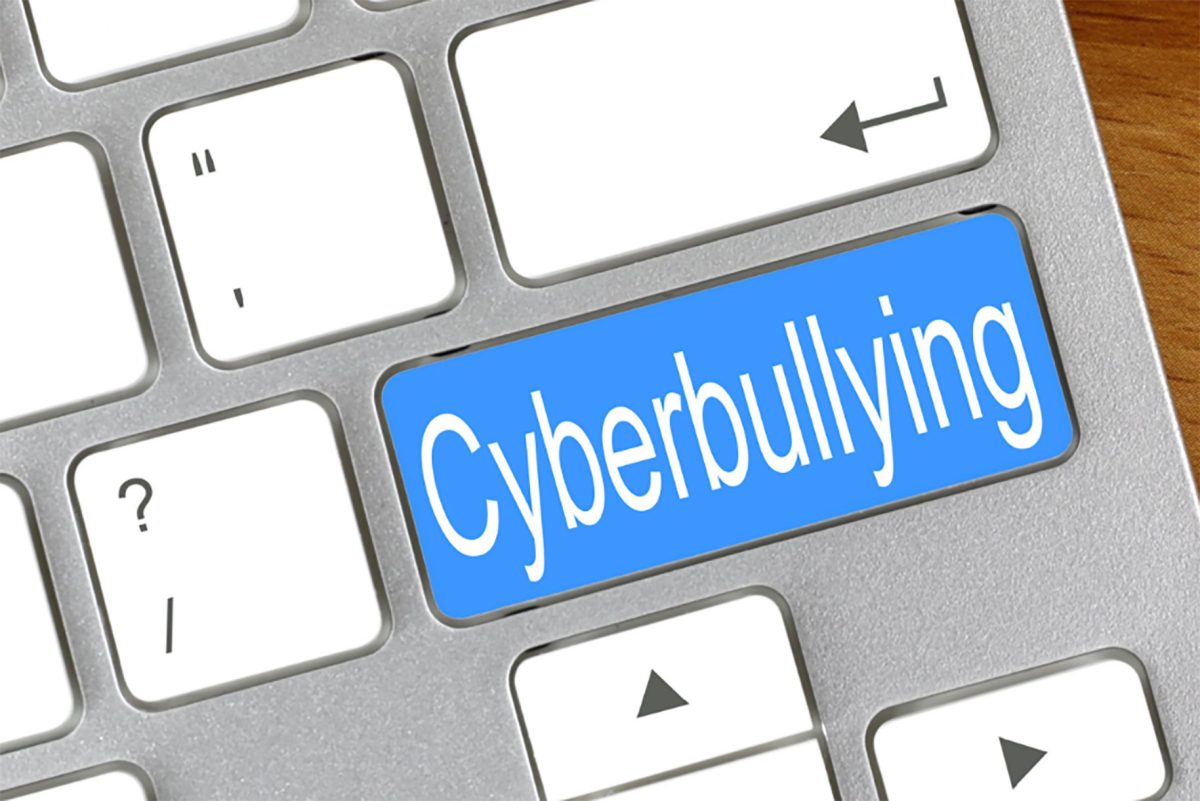“Why does [Student’s Name] always wear those clothes? They should really stick to baggy stuff with that body! #FashionFail”
“I can’t believe [Student’s Name] thought they could join the basketball team. Everyone knows they can’t even dribble! #NotGoodEnough”
“I can’t believe [Student’s Name] thinks they can be safe on the internet. Here’s their address if anyone wants to pay them a visit! #ComeAtMe”
While bullying has long been a problem in schools, the rise of technology has given way to a new challenge: cyberbullying.
Many people already know of the concept of cyberbullying. It has existed ever since the beginning of the Internet.
Kidshealth.com defines cyberbullying as “the use of technology to harass, threaten, embarrass, or target another person.”
Cyberbullying can take several different forms on online platforms.
A shocking statistic indicates that almost half of all teenagers are being bullied online through personal messages and chat rooms. Some adolescents are harassed through online games where their personal information is spread.
Misinformation and rumors shared online can significantly affect teenagers. Many teens who post videos and photos often face cyberbullying, experiencing hurtful and degrading comments about their appearance or personal interests related to their posts.
Data collected by the Cyberbullying Research Center indicated that “approximately 55% of the students in [its] 2023 sample reported that they experienced cyberbullying at some point in their lifetimes. About 27% said they had been cyberbullied in the most recent 30 days. When asked about specific types of cyberbullying experienced in the previous 30 days, the most commonly reported types were 1) mean or hurtful comments posted online (30.4%), 2) exclusion from group chats (28.9%), 3) rumors spread online (28.4%), and 4) someone embarrassing or humiliating them online (26.9%).
Forty-four percent of the sample reported being cyberbullied in one or more of the eighteen specific types reported, two or more times over the course of the previous 30 days.”
The sample size for this study was “a nationally representative sample of 5,005 middle and high school students between the ages of 13 and 17 in the United States. Data were collected in May and June of 2023.”
Studies from 2022 by the Pew Research Center reported that other common types of cyberbullying include being called offensive names, being sent explicit images without consent, and even physical threats.
Teens and young adults have been the most affected by cyberbullying with teenage girls being three times more likely to get cyberbullied than teenage boys.
Around 42% of LGBTQ students have been bullied online, and 21% of Black youth in the US are harassed for their race.
Yet despite the rise in the rate of cyberbully, its significance seems to have fallen by the wayside –making it part of a culture that has been desensitized to this type of harm.
Currently, cyberbullying has become somewhat generalized because of the commonality of it. Student might be more inclined to dismiss online mistreatment, stating that it’s “only words.”
While this type of bullying isn’t physical, it still affects one’s mental psyche, making it potentially more harmful.
Jaxon Jacob ’27 said, “It affects teens a lot because it’s harder to stop than normal bullying. Normal bullying, at least you know who is bullying you most of the time, but cyberbullying—what are you going to do?”
It is not surprising that the majority of people who are cyberbullied are usually around the age of 12 to 17.
The Spark & Stitch Institute has published research emphasizing the vulnerability of teenagers during these years.
Rapid brain development during adolescence has a huge effect on areas related to emotional regulation, decision-making, and social interaction. These changes contribute to heightened self-awareness and sensitivity to social dynamics.
More simply put, the surge of hormones during this period influences mood and behavior, making teenagers more vulnerable to peer pressures and less capable of effectively navigating social challenges.
As they seek to find their identity and fit in with their peers, they may become targets for cyberbullying, which can have lasting impacts on their mental health and well-being.
The Social Media Victims Law Center published a list of the repercussions that victims of this type of bullying experience.
On a very immediate level, cyberbullying can affect the academic performance of teenagers. These students might struggle to concentrate in class or may simply stop trying at all.
Victims can also experience physical symptoms such as throbbing headaches, upset stomachs, and insomnia.
On a social level, victims might experience rifts in their relationships with others. Cyberbullying can cause feelings of distrust and fear.
In the long term, cyberbullying can affect a teenager’s self-esteem, can cause anxiety or depression, and in some cases, lead to suicidal thoughts. Teens who are cyberbullied can experience loneliness and isolation, and many often begin to believe that the terrible comments posted about them are true.
Some California laws were specifically written to deter cyberbullying. According to the Social Media Victims Law Center, those found guilty of cyberbullying can be charged with a misdemeanor and can be punished by being sent to county jail, paying a fine of $1000, or both.
But punishment has not been effective in reducing the occurrences of cyberbullying or in diminishing
Education and awareness are among the first steps in ensuring that cyberbullying is not treated lightly.
Digital literacy programs should be a part of school curriculum to teach students about responsible online behavior, privacy settings, and the potential consequences of cyberbullying. Assemblies and school activities can focus on the negative impacts of cyberbullying while also promoting empathy and respect for others.
Schools can also institute zero-tolerance policies regarding cyberbullying, but more importantly, school should create a culture where students feel safe reporting these incidents.
Finally, schools should have support systems in place to help victims. Counseling services can provide emotional support, but schools should also consider establishing peer-support program where students can support each other.
Cyberbullying may have become part of the fabric our society, but turning a blind eye to the problem is not a solution at all.







